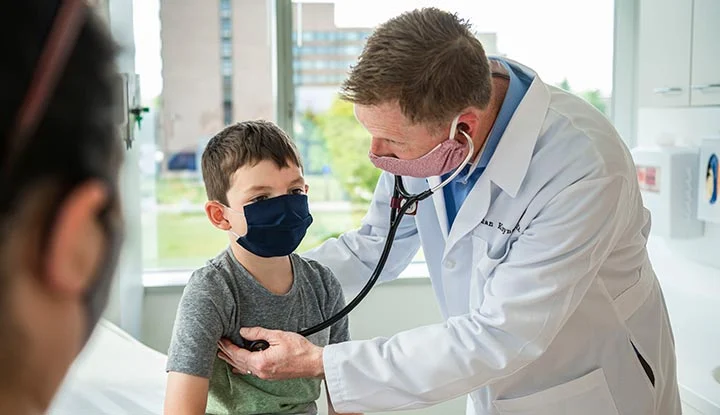Embarking on the journey to becoming a pediatrician in the U.S. opens the door to a profession dedicated to the well-being of children. This demanding yet rewarding path requires a blend of rigorous education, clinical expertise, and compassion. As a pediatrician, you’ll play a pivotal role in shaping the health and future of young patients. From the intricate steps of medical school admission to the continuous pursuit of knowledge in the ever-evolving field of pediatrics, this pursuit demands dedication and a commitment to providing the highest standard of care for the nation’s children.
Education Requirements
Education Requirements for becoming a pediatrician in the U.S. encompass a rigorous academic journey. It begins with earning a bachelor’s degree in a relevant field, such as biology or chemistry, focusing on achieving a high level of academic excellence. Subsequently, aspiring pediatricians must gain admission to accredited medical schools, which involves rigorous screening processes and often includes taking the Medical College Admission Test (MCAT). Medical school, lasting four years, combines comprehensive classroom learning with practical clinical rotations, offering a broad foundation in various medical disciplines. This robust educational foundation prepares future pediatricians for the challenges of their profession, ensuring they are equipped with the necessary knowledge and skills to provide quality healthcare.
Medical School Admission
To embark on the journey towards becoming a pediatrician in the U.S., the initial step is gaining admission to a medical school accredited by the American Medical Association (AMA) or the American Association of Colleges of Osteopathic Medicine (AACOM).The first step in this procedure is to thoroughly prepare for the Medical College Admission Test (MCAT), a standardized exam that assesses your proficiency in subjects including biology, chemistry, and critical thinking. Once you’ve completed the MCAT, you can submit your application through the American Medical College Application Service (AMCAS) for M.D. programs or the American Association of Colleges of Osteopathic Medicine Application Service (AACOMAS) for D.O. programs. Academic achievement, letters of recommendation, and extracurricular activities all play a big part in the selection process for medical school admission. To increase your chances of acceptance, you must thoroughly examine the admission requirements of each institution you are interested in.
Medical School Curriculum
The goal of the medical school curriculum is to provide future pediatricians a thorough understanding of all medical specialties. During this rigorous four-year program, students engage in classroom learning, where they acquire essential theoretical knowledge in subjects such as anatomy, physiology, and pathology. A key component is clinical rotations, which provide students the chance to apply their knowledge in actual medical settings while being supervised by practicing doctors. These rotations cover diverse specialties, ensuring a well-rounded education. Additionally, medical students participate in practical training sessions, honing crucial skills such as patient communication, medical history-taking, and physical examination techniques. This comprehensive curriculum equips future pediatricians with the fundamental expertise needed to excel in their medical careers.
Residency Training
Residency training is a critical phase in a pediatrician’s journey, lasting for three years. Throughout this time, aspiring pediatricians work in clinics and hospitals under the guidance of seasoned mentors. The training encompasses a wide range of clinical rotations, allowing residents to gain hands-on experience in various pediatric specialties, including neonatology, emergency medicine, and adolescent medicine. Residents diagnose and treat patients, honing their skills in managing pediatric illnesses and understanding the unique healthcare needs of children and adolescents. This intensive training prepares pediatricians to handle diverse cases, develop effective communication skills with young patients and their families, and make well-informed medical decisions, laying a solid foundation for their future practice.
Board Certification
Board certification is a crucial step in a pediatrician’s career. After completing the required residency program, pediatricians are eligible to take the certification exam administered by the American Board of Pediatrics (ABP). This rigorous examination assesses a pediatrician’s knowledge, skills, and expertise in various areas of pediatric medicine. Achieving board certification signifies that a pediatrician has met the high standards set by the ABP, demonstrating their competence in providing quality care to young patients. Pediatricians who successfully complete their board exams are acknowledged as experts in their profession and are qualified to address a variety of pediatric health issues.
Maintain Continuing Education
Maintaining continuing education is essential for pediatricians to stay current with advancements in medical practices and treatments. Engaging in regular educational programs and seminars enables professionals to enhance their skills, ensuring the highest quality of care for patients. These educational opportunities cover a wide array of topics, ranging from emerging medical technologies to evolving pharmaceuticals. Pediatricians can participate in workshops, conferences, and online courses, all designed to deepen their understanding of specific medical conditions and refine their diagnostic and treatment techniques. By staying informed, pediatricians can uphold the standards of their practice, providing effective, evidence-based care to their young patients.
Join Professional Organizations
Pediatricians can access priceless resources by becoming members of professional organizations like the American Academy of Pediatrics (AAP). These organizations let you interact with colleagues and subject-matter specialists through networking opportunities. They also provide access to the most recent studies, recommendations, and advancements in pediatric medicine. By becoming a member, you can stay informed about certification requirements and continuing education, including programs related to the Maintenance of Certification Assessment for Pediatrics (also known as MOCA-Peds). Engaging with these organizations not only fosters professional growth but also enables you to contribute to the broader medical community, sharing insights and staying updated with advancements in your specialization.
Conclusion
Becoming a pediatrician in the U.S. requires unwavering dedication, extensive education, and a continuous thirst for knowledge. Your journey involves rigorous training, from medical school to residency, along with active engagement in professional organizations. By embracing lifelong learning and staying updated with the latest medical advancements, you ensure that you provide the best possible care to your young patients. As a doctor, you have a responsibility to the future and welfare of the younger generation in addition to your professional responsibilities.
